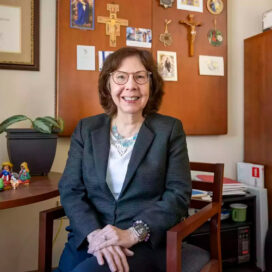At least Indiana can agree to spring forward
Published: February 21, 2006 / Author: Peter Writer
SOUTH BEND, Ind. — Mike Lerman does not ask for much. He only wants his stomach, which is forced to live on Eastern time, to join his heart where it has always been happiest, in the Central zone.
Never is that more annoying than during long days in summer when Lerman cannot break the Jewish fast until sunset, which sometimes doesn’t reach his South Bend home until 10 p.m. He figures grumbling of all kinds would stop an hour earlier if only South Bend aligned itself with its brethren to the west.
“It’s a killer,” Lerman says.
When Mark Catanzarite thinks about time zones, he hears telephones ringing.
“People are constantly calling the South Bend station and asking which time they’re on,” says Catanzarite, who helps oversee the northern Indiana commuter railroad that runs between South Bend and Chicago.
Of 20 stations, only South Bend is on Eastern time.
“I’ve always called myself a Midwesterner,” Catanzarite explains. “When people ask where South Bend is, I always say we’re 90 miles east of Chicago. I never say we’re 130 miles north of Indianapolis.”
Time is a sensitive subject these days in Indiana, in a struggle as much about identity as about economics, schoolchild safety or geographical clout. Perpetual tweeners, Hoosiers cannot agree where their future lies, a problem that does not afflict the longitudinally pure inhabitants of the East and West coasts.
It all started with daylight saving time. Ending a debate that had lasted half a century, the state legislature voted last year that the entire state would observe “fast time” starting April 2, 2006.
So close was the House tally that the measure appeared defeated 51 to 49 until two legislators changed their minds after voting, perhaps after checking their watches.
The switch flipped the result. No longer would residents of 18 counties spring forward and fall back while the inhabitants of the other 74 counties lazed along as before. The crazy ending would have amused former Indiana GOP chairman Rex Early, who memorably straddled the issue during a gubernatorial debate in 1996.
“Some of my friends,” Early said, “are for putting all of Indiana on daylight saving time. Some are against it. And I always try to support my friends.”
Yet even after the vote, Hoosiers were not looking at the same clock. Ten counties were on Central time, 82 on Eastern. Some have always felt drawn east or north, toward Ohio, Michigan and the Atlantic megalopolis on Eastern time, while others pulled west toward Illinois.
St. Joseph County, home to South Bend and the University of Notre Dame, was one of 17 counties that petitioned the federal government to move from the Eastern time zone to the Central. Naturally, the county itself was split on the issue. Gov. Mitchell E. Daniels Jr. (R) opposed the move as the U.S. Department of Transportation refereed.
The fans of Central time for St. Joseph lost, prompting Notre Dame business professor John F. Gaski to protest, “If Eastern time’s so great, why isn’t the Chicago Chamber of Commerce demanding a change to Eastern time?”
Gaski produced all sorts of charts and statistical analyses in an effort to show that the business case for keeping St. Joe facing East was “a fraud and a hoax.” The local chamber respectfully disagreed.
He had another reason to care: “It’s more convenient for my mother to be on Central time. The nightly news is over at 10:30 instead of 11:30. I don’t want her to have to stay up. That’s enough for me to go to total war.”
Hoosiers could not even decide among themselves who should decide. Some suggested a statewide referendum. One resident suggested taking a cue from the sun.
“I think all of Indiana should be in the Central time zone because that is how the sun determines when noon should be,” Dottie Brisley wrote the Transportation Department, adding that the state should all be on one schedule. “Remember ‘KISS’ (keep it simple stupid)?”
Of course, it was the sun that got Indiana into this mess in the first place.
Until the major railroads decided in 1883 that enough was enough, towns across the country set their clocks according to their own reckoning of the sun’s height, and railroads each set their clocks differently. Then the barons got together and established “standard time” and four zones.
Noon in railway time arrived at 12:16 according to the old Indianapolis clocks.
Indianans have battled over ticks and tocks almost ever since. Liz Furnivall, one of more than 6,000 people who weighed in with the Transportation Department, pleaded for a reprieve from comedy and confusion.
“Please get our state all on one time zone,” she wrote. “I think everyone should be tired of being a laughed-at state for not knowing what time it is.”
Lerman, who runs Steel Warehouse, a successful processing company, believes the business case for Central time is a slam-dunk. He has a pet theory about why his pro-Central forces lost the debate, leaving the sun to set and dinner to be served an hour later in South Bend than in Chicago.
“Let’s be honest about it,” Lerman confided. “It’s for the golfers. They can stay out later. They love that stuff.”
# # #
/news_and_events/news_articles/article/3661/at-least-indiana-can-agree-to-spring-forward




